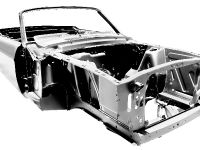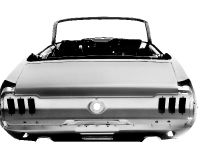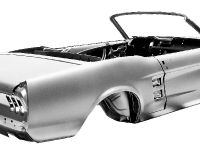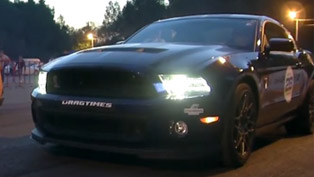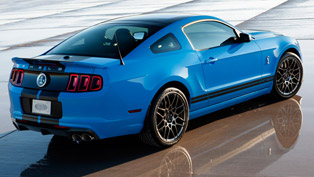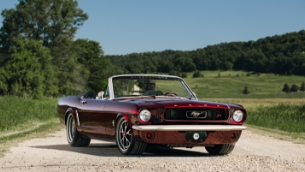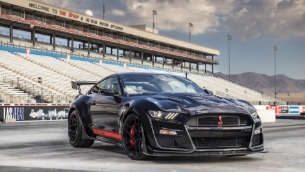Newly Forged '67 Mustang Convertible Shell to Please Classic Car Restorers
Restorers of all time classics will be happy to know that yet another, officially licensed, Ford Mustang body is now available to order. The new shell is the '67 Mustang convertible which adds to an already available array of bodies for the '65 convertible, the '67 fastback and the '69 fastback.
Dennis Mondrach, Ford Restoration Parts licensing manager is adamant that a proposed body for restoration purposes should be rigorously checked if it falls into the standards of the original. Dynacorn International have passed that check effortlessly and have even improved on the standards. "The new '67 convertible body shell gives restorers a super-solid foundation on which to build their dream pony car." said Mondrach. According to Jim Christina, Dynacorn principle manager, the panels of the body are made from a modern high-grade virgin steel that is thicker than the original. For further rigidity, newly developed welding methods are applied when assembling the body panels. Several tweaks on known stress areas are also done all in the name of body strength.
The number of genuine, 40 years old spare parts has dropped significantly as the value of classic Mustangs is on the rise. Today fresh, ambitious restorers are highly unlikely to come across a fully usable, original body which they can restore. The process alone is expensive and time consuming. And now thanks to companies like Dynacorn, people wont have to waste resources on this tedious scavenging hunt bur rather order a new body, rust free and fully licensed for the sum of $15,995.
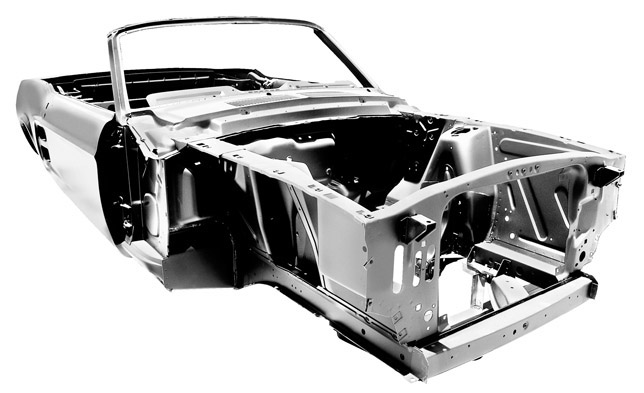
Background.
The first Mustangs ever to roll out from the Ford factory were a huge success with over a million sold in the first eighteen months. For the next wave, however, Ford needed to revise its love child in order tackle the incoming rivals from GM, Chrysler and various sports cars imported from Britain. Thus the Mustang '67 was born - the body was widened, the hood lengthened, and the engine bay grew in size to give the freedom of choosing from a wide range of engines starting at the thrifty and peppy 200-cubic-inch inline six-cylinder and ending at a thundering 390-horsepower 427 that came in the Shelby GT500. That marked the beginning of the big-block engined muscle car mania. New features also included an all-new body material, a redesigned grille, new taillights. Inside, the more luxurious interior took the Mustang enhanced its appeal. Buyers could opt for a tilt-away steering wheel, a gauge package with a built-in tachometer, brushed aluminum trim on the dash, door panels and shifter console. There was also a roof console with lights between the sun visors. and the.
The Dynacorn body has taken into account all those changes made back then and is now fully applicable no matter what engine one might chose: the 390, 427 and 428-cubic-inch all can be easily bolted in. Today more than 90 percent of the parts needed to restore a '67 convertible are made by Ford-licensed manufacturers.
Source: Ford
